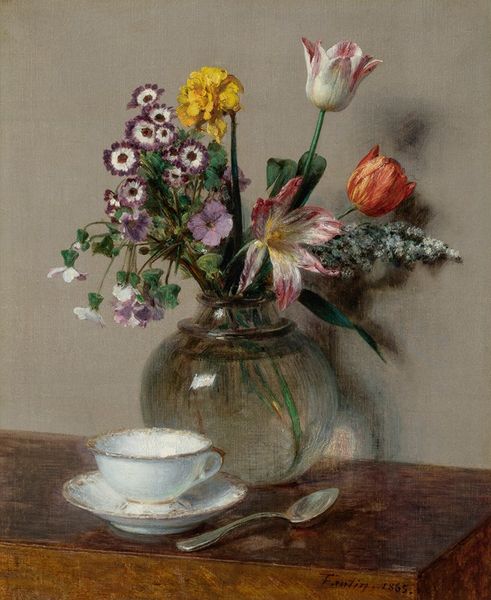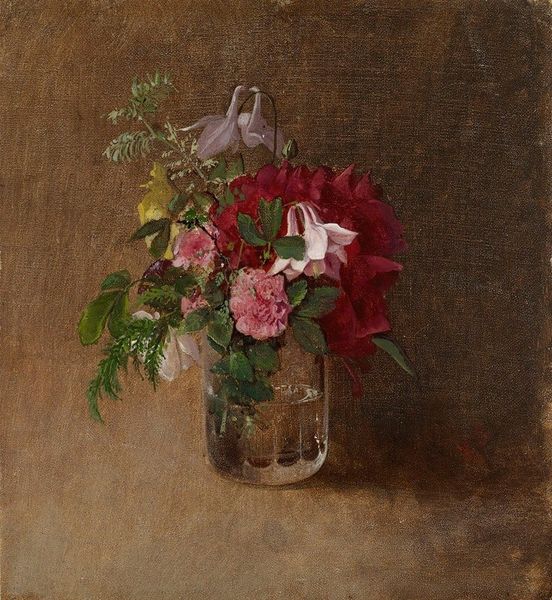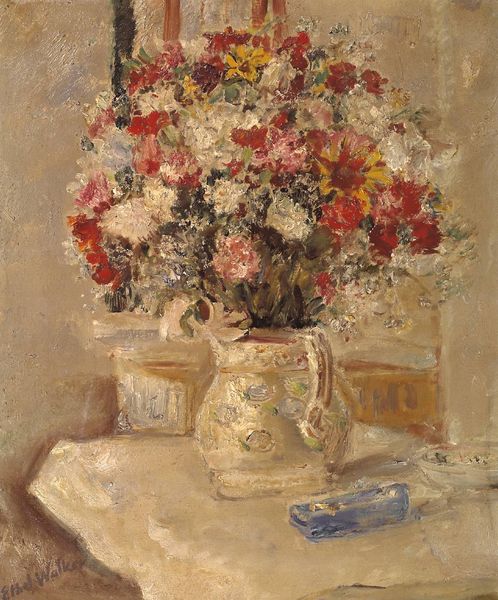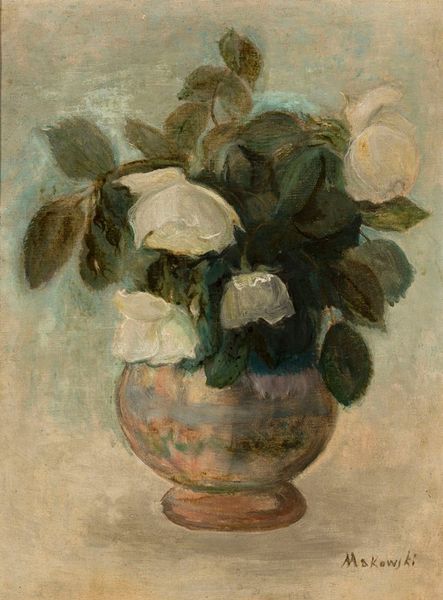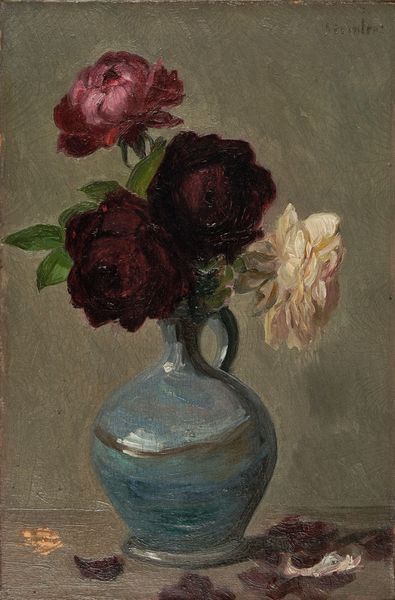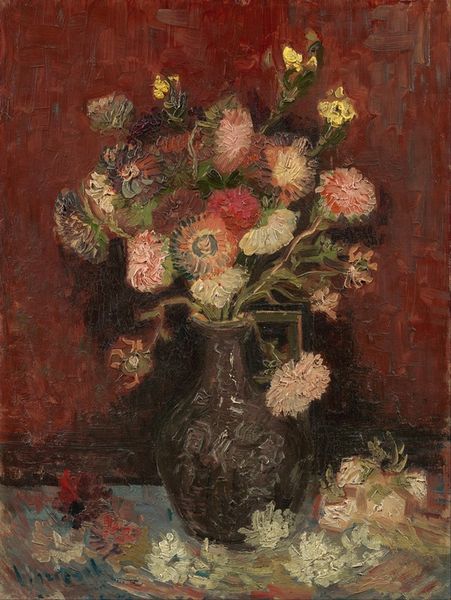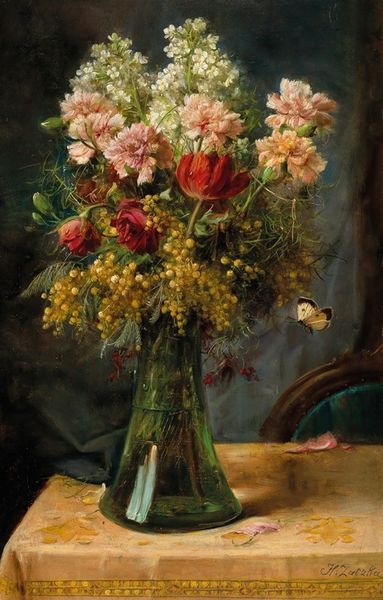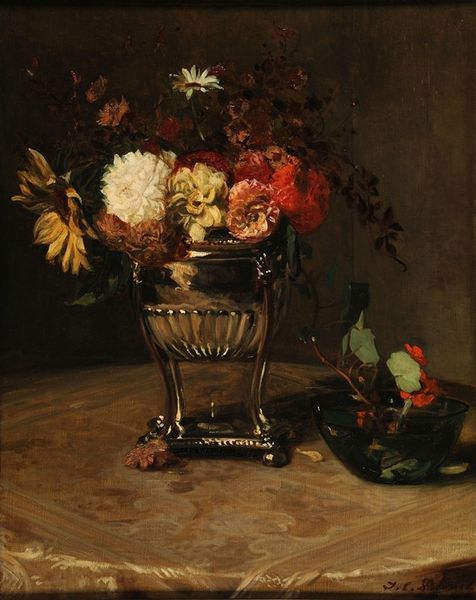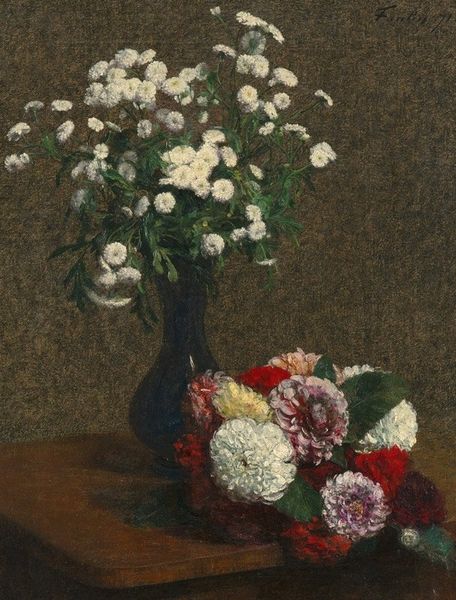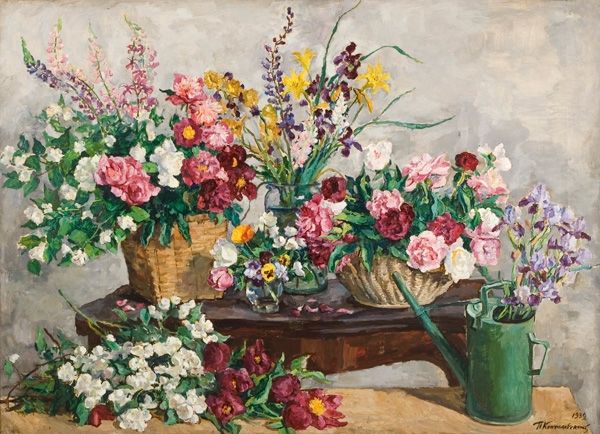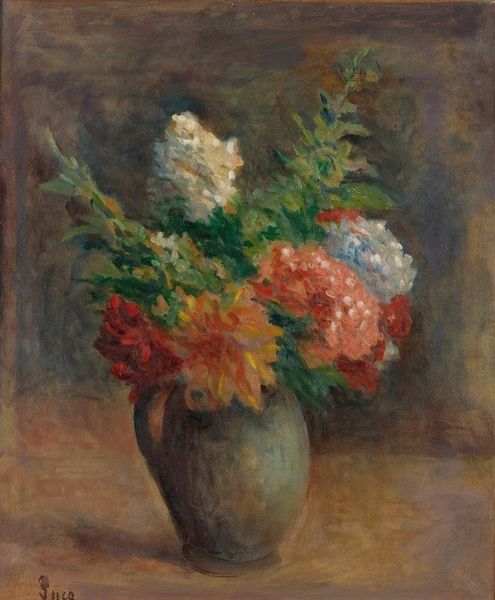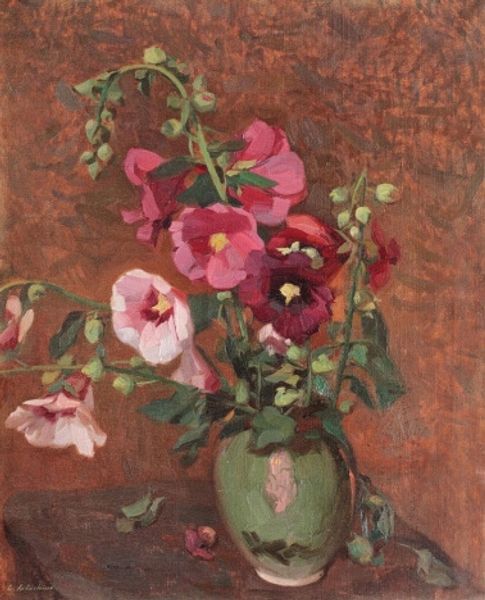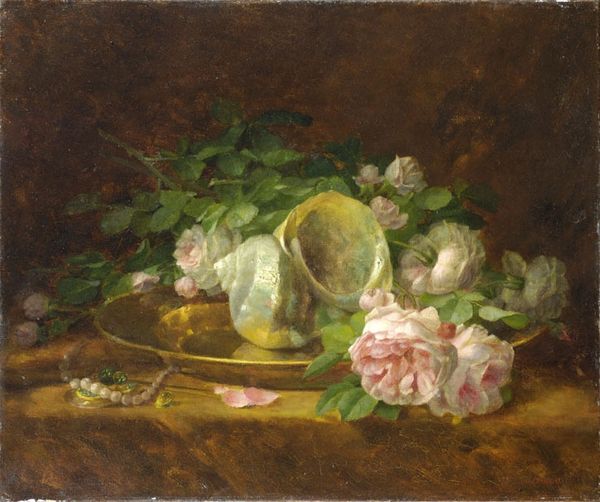
Copyright: Public Domain: Artvee
Editor: This is "Pansies and Spirea," an oil painting from 1882 by Elihu Vedder. There’s almost a melancholic feel to it with its muted colors and dark backdrop, despite the beauty of the flowers. What do you see in this piece, particularly in terms of its historical context? Curator: What I find compelling is the way Vedder engages with the Victorian obsession with flowers and their symbolic meanings, but through a distinctively American lens. The painting operates within the tradition of still life, a genre that historically served to demonstrate wealth and leisure, but it also subtly challenges it. Editor: How so? Curator: Well, consider the objects. Instead of traditional fine porcelain, we have this giant clamshell—likely an imported curiosity—serving as the vase. The elaborate, almost grotesque, wooden stand feels like a trophy from travels, doesn’t it? These details disrupt any straightforward reading of domestic tranquility, suggesting a burgeoning American identity grappling with global trade and the acquisition of exotic goods. Editor: That’s a great point. It makes you think about where the items in the painting originate, and the world that they connect with, beyond this interior. Curator: Exactly. The painting hints at a world beyond the domestic, reflecting a culture grappling with expansionism and its relationship to the rest of the world. Editor: So it is a Victorian still life, but also a bit of a commentary on Victorianism itself. I never would have thought of that on my own! Curator: It highlights the significance of looking beyond the purely aesthetic and considering the societal forces that shape an artist’s perspective and subject matter. Editor: I'm starting to see how looking at these seemingly simple things can be incredibly revealing about history and society. Thanks!
Comments
No comments
Be the first to comment and join the conversation on the ultimate creative platform.
